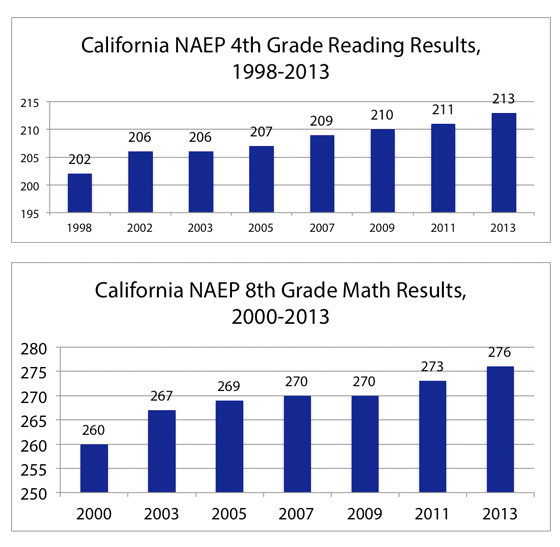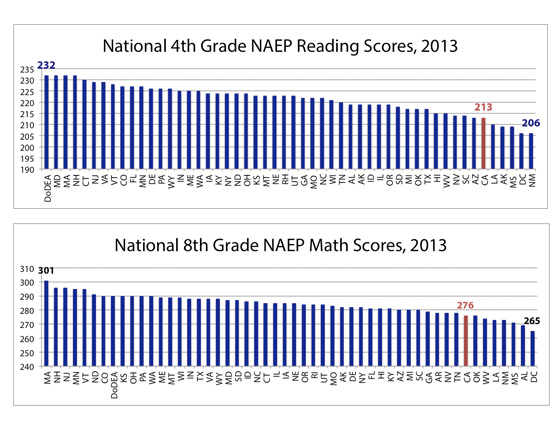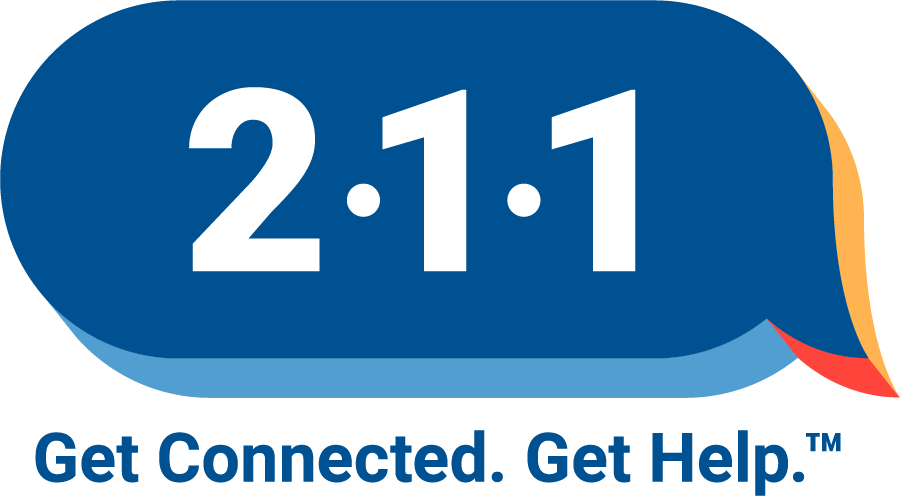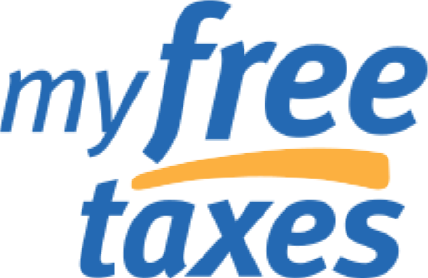California Students Improving In Math And Reading, But Still Falling Behind Nationally
Three months ago, the National Assessment of Educational Progress (NAEP) released its latest math and reading results from “The Nation’s Report Card,” an assessment typically conducted every two years that measures how well students perform in core subject areas. It is arguably the best tool we have to measure how K-12 students are performing academically across states.
The results for California students in both 4th grade reading and 8th grade math are encouraging. As illustrated in the charts below, California students have improved 11 points, on average, in 4th grade reading since 1998, and 16 points, on average, in 8th grade math since 2000.

When we examine how California compares with the rest of the country, however, California students are lagging behind in both 4th grade reading and 8th grade math, and have consistently done so since recent NAEP data has become publicly available in the early 1990s. 2013 results, for example, show that California students beat scores from only five states in 4th grade reading and only seven states in 8th grade math.

One of the fundamental questions these data beg is what California can do to better match up with top-tier states such as Massachusetts and New Jersey? Perhaps more pointedly, what can California learn from higher performing states in terms of education reform and academic progress?
Massachusetts is a good example. In 1993, the state passed a revolutionary education reform bill, which, among other things, doubled the amount of public education funding, established a “minimum budget necessary for each district to adequately educate all of its students,” developed curriculum and vocational standards, and gave more authority to superintendents and principals to manage and operate their respective schools. What was remarkable about that legislation is that it tied public education funding with educational improvements in one comprehensive package, whereas many educational polices tend to develop goals and funding levels independently and piecemeal. Massachusetts was already a top-performing state prior to the 1993 education reforms, which may be the point; even though Massachusetts was doing fairly well, it did not stand pat, but felt compelled to increase standards and funding. Since that time, students in Massachusetts have consistently ranked among the nation’s highest in core subject areas such as math and reading.
While California has made some progress in public school finance through the recent passage of Proposition 30, which implements the Local Control Funding Formula (designed to direct funding towards the most disadvantaged students), and its adoption of Common Core Standards, it is too early to determine if they will significantly boost educational progress among California students.
Given this, if there was one thing you could do to help improve California’s educational scores, what would that be and what that look like? Feel free to share your comments below.




